Last Updated on December 22, 2025 by Emma Fajcz | Published: March 17, 2020
As the mesmerizing scent of orange blossoms fills the air, drums start beating, and Semana Santa is on everyone’s lips, there’s no denying it—the countdown for Spring in Seville is officially over!
The impressive Holy Week or Semana Santa festivities in Seville in spring are an unforgettable spectacle that draws hundreds of thousands of visitors from around the world. But for many sevillanos, the preparations that take place throughout Cuaresma (Lent) are often as exciting as the event itself. During the days preceding Easter, the emotion and anticipation are palpable and the Andalusian capital comes alive with tradition.
If you’re planning to stay in the city before the start of Semana Santa, here are a few ways you can experience the buzzing energy of Lent, engage all of your senses, and make your time in Seville in spring extra special no matter your beliefs!
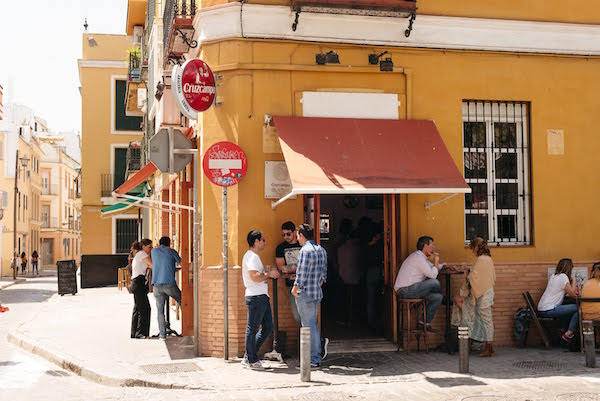
1. Visit churches and admire the pasos
The centerpiece of Seville’s Holy Week processions—the pasos—are the elaborately decorated floats that journey through the city for up to 14 hours. Over several weeks, members of all 60 brotherhoods meticulously prepare every detail, from polishing silver accents to adorning with gold leaf and setting up ornate canopies. The pasos are one of the post iconic things to see in Seville in spring!
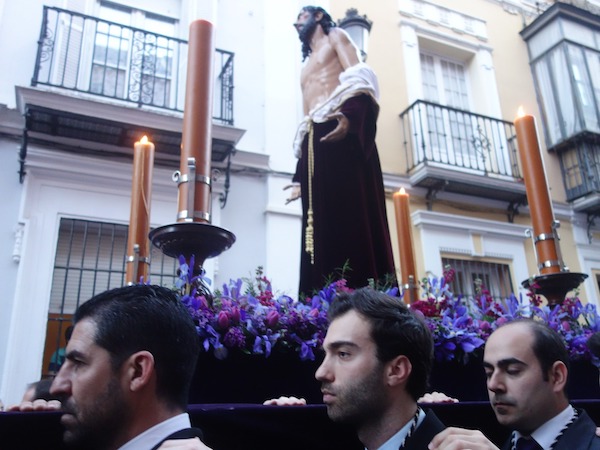
Over several weeks, members of all 60 different brotherhoods work hard getting them ready for their big day. From polishing silver and applying gold leaf to ornate canopies, to setting up candles and arranging lifelike wooden sculptures on the float, everything is taken care of to the smallest detail.
If you happen to be visiting during Cuaresma, don’t hesitate to enter all the beautiful churches around Seville to admire the pasos and check out the progress. The sculptures—some of which date back as far as the 16th century—and both the grandeur of the floats and the intricate decorations are sure to leave you speechless.
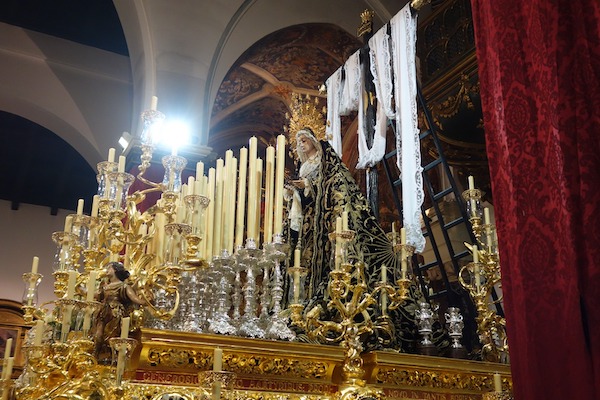
2. Watch a rehearsal or a Via Crucis during springtime in Seville
If you’ll miss the main processions this year, you can still get an idea of the dedication involved in carrying the floats by checking out a rehearsal.
Several times before the big event, typically on weekday evenings or Sunday mornings, proud teams of costaleros—the men involved in all the heavy lifting—practice the route by taking the heavy float structure around the neighborhood.
Watching them carry the weight on their cervicals, move to the beat of the music, negotiate narrow street corners, or lift the paso at exactly the same time is an image that’s likely to stick for a long time!
At some point before the start of the Holy Week, each brotherhood will also organize a solemn procession known as Via Crucis or Stations of the Cross. It consists of members carrying an image of Jesus Christ—this time on their shoulders—while stopping several times to recite prayers. The float is usually accompanied by chapel music.
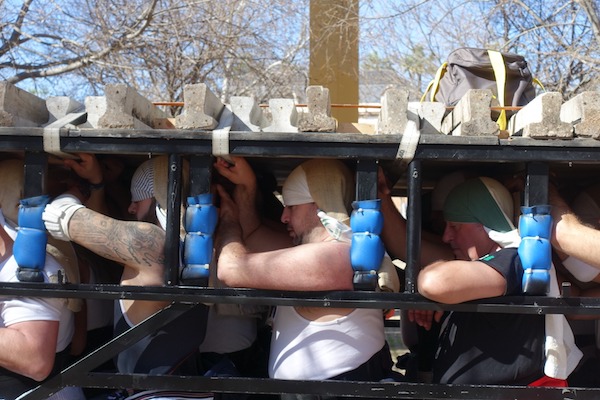
3. Get your sweet fix at a local convent
Practicing Catholics may abstain from eating meat on Fridays during Cuaresma, but in Seville, there’s no rule against treating yourself to something sweet—quite the contrary! In fact, during Lent, many cloistered nuns around the city will bake confections just for the occasion. So why not satisfy your sweet craving, try out seasonal specialties and support a local convent all at once?
Traditional Lenten desserts include torrijas (sliced bread soaked in egg and wine, fried, then dipped in honey and cinnamon), pestiños (crunchy dough fried in olive oil, bathed in honey and flavored with anis or sesame seeds), or roscos fritos (Spanish donuts sprinkled with sugar). All of them, obviously, are divine!
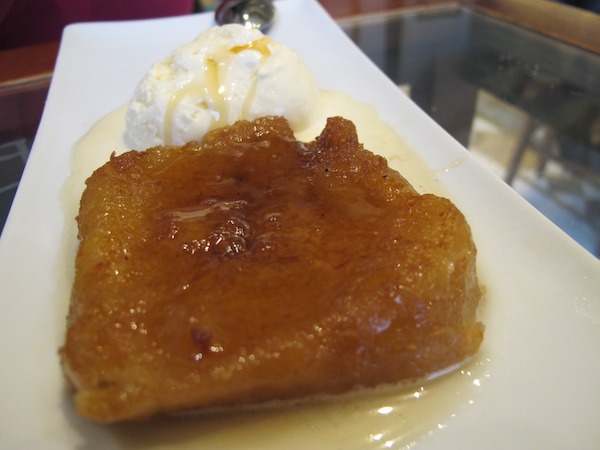
4. Vibrate to the music
For many locals, an essential part of Holy Week processions is the music that brass and wind bands play as they march behind the floats. In the lead-up to Easter, musicians regularly rehearse outdoors, many concerts are held at churches, and on the weekends, musical ensembles from different parts of the city or region gather for contests known as certámenes de bandas. You can simply enjoy a walk around the center and you will be delighted by the sound of the beating drums.

5. Kiss a revered statue
To witness the devotion that sevillanos have for their favorite sacred images, there’s nothing quite like going to see a besapiés or besamanos. Literally meaning “foot-kissing” and “hand-kissing” respectively, these ceremonies are often held during Cuaresma. Watch in awe as many locals line up—sometimes for over an hour—to pay their respect to a wooden sculpture of Jesus Christ or the Virgin Mary.
If you stop by churches on weekends during Lent, you’re more than likely to catch a glimpse of this intriguing tradition.

6. Devour some traditional tapas
Last but not least, your Seville experience won’t be complete until you try some (or all) of the traditional recipes that make Lent such a special time of year. As meat takes a back seat, the following dishes are commonly eaten throughout Cuaresma and you’ll have no problem ordering them in most bars:
- Tortillitas de camarones: these tasty shrimp fritters made from both wheat and chickpea flour hail from nearby Cádiz, but many bars around Seville will make them especially for Lent.
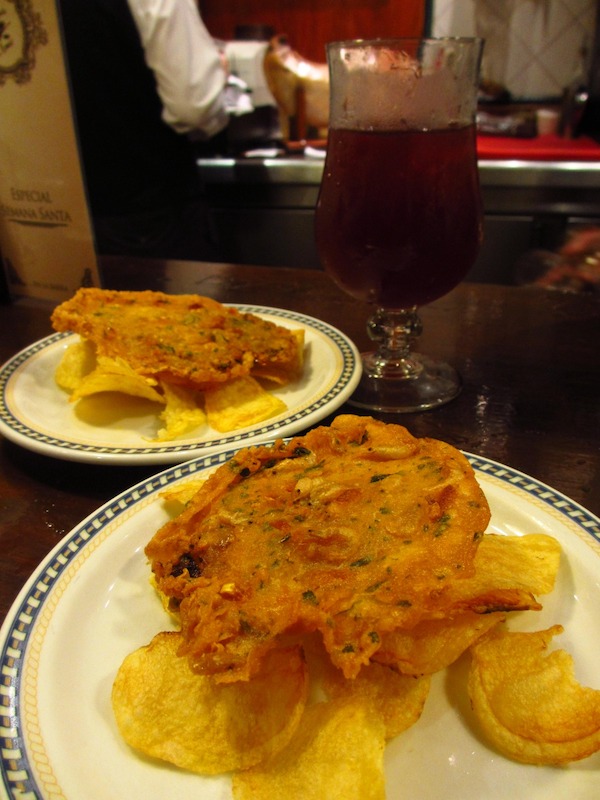
- Espinacas con garbanzos: a flavorful stew of spinach, chickpeas and cumin. Be sure to try some of our favorite ones by checking ou rblog on the best Spinach and Garbanzon is Seville!

- Anything with codfish: bacalao is king during Lent, so it’s more than common to see it make an appearance on daily special boards. Don’t miss bacalao con tomate (cod in tomato sauce), pavia de bacalao (battered cod), garbanzos con bacalao (a simple but hearty chickpea and cod stew), or buñuelos de bacalao (delicious, fluffy salt cod fritters).
Can’t get enough Holy Week? Sevillanos love this special time of year so much that there are even entire bars dedicated to it! Check out the video below and step inside La Fresquita, one of Seville’s most epic Semana Santa-themed tapas bars.
Seville Lent Traditions FAQ
What are the key events during Seville’s Holy Week?
Seville’s Holy Week features processions, rehearsals, and solemn rituals such as the Via Crucis. The city comes alive with cultural traditions, detailed floats, and moving musical performances.
When is the best time to visit Seville to experience these traditions?
The optimal time is during Holy Week in spring, when preparations and celebrations reach their peak. Arriving during Cuaresma lets you enjoy both the build-up and the festivities.
Can I enjoy these traditions even if I’m not religious?
Absolutely. The celebrations in Seville are cultural events that attract visitors of all backgrounds with their artistry, music, and delicious seasonal food.
Where can I see the beautifully decorated pasos?
Many churches across Seville showcase the pasos when they aren’t being paraded. Visiting local churches during the weeks before Holy Week offers a glimpse of these exquisite creations.
What traditional dishes should I try during Lent in Seville?
Don’t miss local specialties like tortillitas de camarones, espinacas con garbanzos, and various codfish preparations that shine during Lent.
Are you coming to Seville after Cuaresma? Fortunately, there’s still a lot to look forward to, with Seville’s colorful Feria de Abril kicking off less than two weeks after Easter Sunday. So don’t hold back and start planning your trip to Seville in spring today!
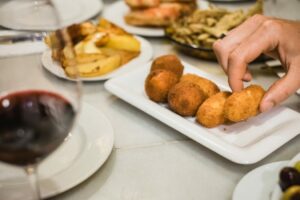
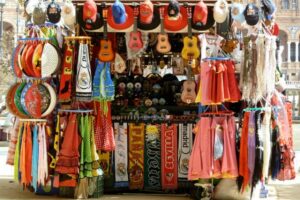
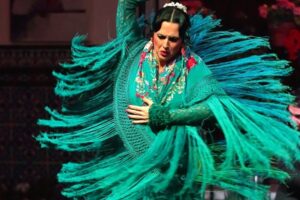






Thanks Sophie to this precious advices!
Thanks for reading, Marie!
Sophie
Ya eres una “capillita” total que vives más las vísperas de la Semana Santa que la la Semana Santa en sí.
Hay “capillitas” sevillanos que el Domingo de Ramos sienten que ya está terminando la Semana Santa.
Lo de vivir las “vísperas” de una fiesta, como de un viaje, a veces es tan intenso o más como la propia fiesta o viaje.
Para un extranjero que venga anticipadamente a la Semana Santa es una guía intensamente trabajada por una persona que sabe lo que pueda interesarle. Y en este año , habría tenido la fortuna de haber vivido lo único posible.
Les das pistas de todos los lugares: Iglesias donde se preparan los pasos, ensayos de las cuadrillas de costaleros, gastronomía (curiosa asociación Cuaresma-Vegetarianismo), pero también los cultos de Hermandad, etc..
Se ve la intención de no explicar la Semana Santa, sino de dar pistas al viajero para que la descubra.
Todo muy de calle, de andar por la ciudad, lo que es necesario para el turista. Que descubra.
Lo único que me ha chocado es la traducción de “pasos” al inglés por “floats” -carrozas-, pero es que no hay palabra para lo que no existe. Quizás añadir una descripción como de “esculturas religiosas sobre plataforma transportadas sobre las espaldas…” Pero es mucha palabra. Pero carroza nos suena a otra cosa: carnavales, cabalgata de reyes magos, etc..
Me atrevo a sugerirte que pongas alguna breve bibliografía que pueda existir publicada en lengua extranjera. A mí, cuando viajo, o mejor, después de haber viajado, me gusta leer sobre el lugar donde he estado.
Muchas gracias por tu comentario, Enrique! Nos alegramos de que hayas disfrutado del artículo y esperamos que hayas pasado una buena Semana Santa (aunque sí ha sido bastante diferente para todos este año!).